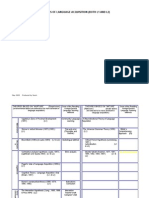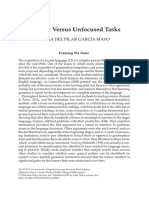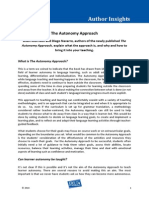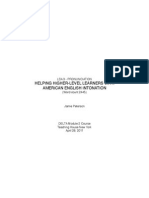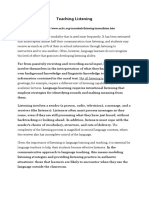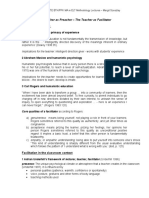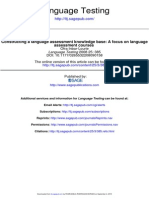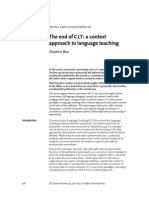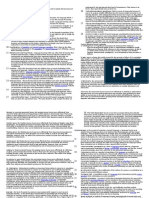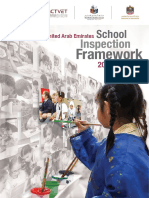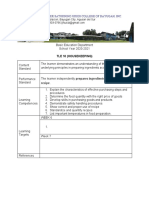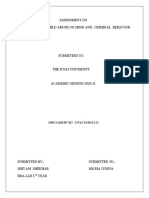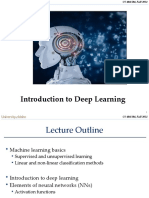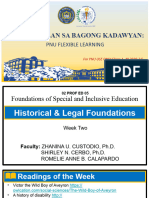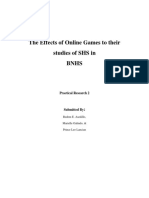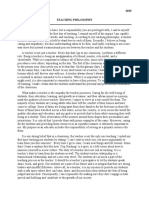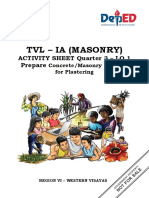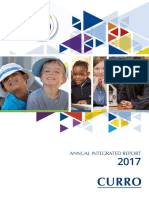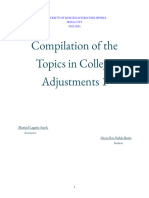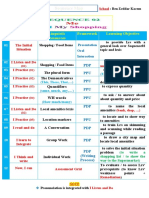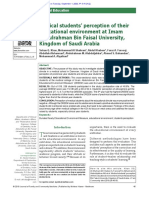0% found this document useful (0 votes)
191 views4 pagesSLA Theories for Educators
This document discusses several key principles and theories of second language acquisition (SLA):
1) Learners progress through predictable stages of language development, starting from producing no language to gaining advanced fluency over several years.
2) Learners develop an "interlanguage" that incorporates features of their first language and overgeneralized rules of the target language, which can potentially fossilize.
3) Comprehensible input and a low-anxiety environment are necessary conditions for SLA, according to Krashen's theories from the 1980s.
Uploaded by
Katherine MadridCopyright
© © All Rights Reserved
We take content rights seriously. If you suspect this is your content, claim it here.
Available Formats
Download as PDF, TXT or read online on Scribd
0% found this document useful (0 votes)
191 views4 pagesSLA Theories for Educators
This document discusses several key principles and theories of second language acquisition (SLA):
1) Learners progress through predictable stages of language development, starting from producing no language to gaining advanced fluency over several years.
2) Learners develop an "interlanguage" that incorporates features of their first language and overgeneralized rules of the target language, which can potentially fossilize.
3) Comprehensible input and a low-anxiety environment are necessary conditions for SLA, according to Krashen's theories from the 1980s.
Uploaded by
Katherine MadridCopyright
© © All Rights Reserved
We take content rights seriously. If you suspect this is your content, claim it here.
Available Formats
Download as PDF, TXT or read online on Scribd
/ 4







